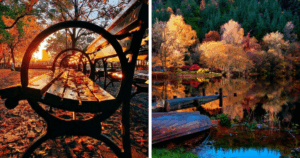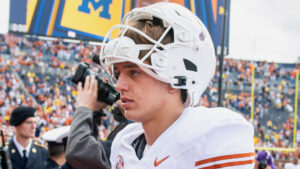Unlock These 14 Surprising Perks of Cooking with Cast Iron
Have you ever noticed how that ancient, heavy cast iron skillet—buried in the back of your grandma’s cabinet—looks exactly the same as it did in your childhood memories… and somehow, better than any shiny “indestructible” nonstick pan you bought last year? I’ll let you in on a secret: there’s a reason why cast iron cookware inspires such devotion, and no, it isn’t because your ancestors were allergic to Teflon . Cast iron just plain lasts—and not just “lasts,” it triumphs, getting more nonstick, flavorful, and steeped with legend each and every meal .
It’s a little bit magical, honestly . With a dash of seasoning (that’s not nearly as scary as it sounds—I promise, you won’t need a wizard’s hat), it becomes a nonstick wonder—perfect for searing, baking, frying, and even showing off on your dining table . Unlike those flimsier pans that peel worse than a sunburn, cast iron only improves with age . So, if you’re fed up with cookware that needs replacing more often than a cell phone update, get ready to discover why sharing is caring… especially when it comes to cooking tools that are practically immortal .
Ready for 14 irresistible, slightly surprising reasons cast iron is the MVP of your kitchen—plus a few recipes you’ll want to gossip about at dinner? Prepare to laugh, learn, and question why you ever let that skillet collect dust! You can LEARN MORE
Cast iron cookware is a timeless kitchen staple; it’s the kind of cookware that your grandparents swore by, and for good reason. While it might not have the sleek look of those shiny, modern non-stick pans, cast iron makes up for it with durability, versatility, and its ability to make your cooking taste better (seriously, it does). Unlike non-stick pans or flimsy cookware that wear out quickly, cast iron is built to last for generations.
Seasoning may seem intimidating at first, but it’s a simple process that unlocks the skillet’s non-stick capabilities and enhances its performance over time. Cast iron cookware is perfect for a wide variety of dishes and can withstand high temperatures without damage.
If you are frustrated with flimsy, scratched-up nonstick pans or replacing cookware every few years, here are 14 benefits of cooking with cast iron and what you can cook on it.
1. Cast Iron is Tough and Durable

Photo Credit: Depositphotos.com.
Cast iron is made to last a lifetime; it is practically synonymous with durability. There are cast-iron kettles from the 18th century that could be taken out of their museum displays, seasoned, and put to work cooking for another hundred years or so. It is made from molten iron that can handle high temperatures, resist warping, and even survive accidental drops better than most other cookware.
Cast iron improves its performance with age when properly cared for. On the other hand, modern pans degrade over time. This kind of cookware is perfect for dishes that require high heat, like seared meats, crispy bacon, or charred vegetables.
2. It’s Naturally Nonstick

Photo Credit: Depositphotos.com.
Unlike Teflon pans that rely on chemical coatings for their nonstick magic, cast iron does it naturally through a process called seasoning. Seasoning is as simple as coating the pan with a thin layer of fat, heating it, and letting the fat bond with the surface to create a smooth, durable finish. The best part? Each time you cook, your cast iron just gets better, like fine wine but for your kitchen.
You can enjoy cooking a wide range of dishes like eggs, pancakes, or fish without worrying about chemical contamination or the environmental impact of disposable cookware.
3. It is Cost-effective

Photo Credit: Depositphotos.com.
Cast iron is surprisingly budget-friendly; it is a misconception that cast iron cookware is expensive because of its rugged build. A quality skillet from reputable brands can cost as little as $20 to $40, and thrift stores often carry older cast iron pieces that can be restored for even less.
Compared to the recurring expense of replacing nonstick pans every few years, cast iron is a one-time investment that will save you money in the long run. You can try affordable staples like stir-fried vegetables or skillet pasta dishes. These cost-effective meals pair perfectly with cost-effective cookware.
4. It’s a Multi-Generational Tool

Photo Credit: Depositphotos.com.
A cast-iron skillet carries stories. Many families pass down their cookware through generations, building a sense of connection to traditions. This long-lasting quality also reduces waste, making cast iron an eco-friendly choice.
Restoring old or rusty cast-iron pans is easier than it looks. Sanding off rust and re-seasoning the pan can bring it back to life. Family recipes like apple pies, Sunday roasts, or homemade bread become even more special when prepared in a pan with history.
5. Adds Iron to Your Food

Photo Credit: Depositphotos.com.
One of the unique and overlooked benefits of cast iron cookware is its ability to naturally infuse small amounts of iron into the food you cook in it. According to a study, food cooked in cast-iron cookware contains 16.2 % more iron than food cooked in Teflon cookware.




















Post Comment